Genre: Simulation Developer: Polygames Publisher: Tengen Players: 1 Released: 1992
Back in the early 1990s, Atari was still making a solid name for itself in the arcade scene. They regularly pumped out games that grabbed the attention of gamers, and some of those games were early polygon “simulation” titles. Stun Runner, Hard Drivin’, Race Drivin’… they all used flat shaded polygons to create the small worlds that the players would interact with. And, while usually over with rather quickly, they proved to be a lot of fun. Another game among them, was Steel Talons, a helicopter flight sim where you got to fly around small outdoor arenas and blow up tanks, aircraft, and more. This game got a port to the Genesis in 1992, courtesy of Polygames. Like the ports of Hard Drivin’ and Race Drivin’, it sought to bring home the thrills of the arcade game. But did this Genesis game soar, or not even get off of the landing pad? Read on.
Helicopters are your life. You love to fly them, and your skill hasn’t gone unnoticed. The Steel Talons, the Army’s super elite combat chopper team, have chosen to give you the chance to earn the right to fly with them. To become one of the best of the best. However, they don’t just hand over such honors. You’ll have to earn it and do so going up against ground and air targets hellbent on bringing you down, while taking on the dangerous terrain as well. Are you up for it
Graphically, Steel Talons does its best to capture the look of the arcade game. The polygons are flat shaded, with things like mountains, bases, tanks, enemy aircraft, and the like, all being colored to make it appear as if there’s a light source present. There’s a decent draw distance on the ground, enemies, and such, but the mountains tend to pop up abruptly as you fly along due to their size. However, the game tries to counter that last bit by creating a sense of everything fading in a little to combat the pop up. It does this using a pixel checker pattern on the mountains and ground at first, then fills them in with solid colors after they’ve gotten a bit closer.
Being a polygon game on the Genesis, it’s not going to wow the player visually, as everything’s built out of a minimal number of polygons. And though anyone familiar with the arcade original will quickly notice that the terrain and vehicles are noticeably more simplified on the Genesis, they still resemble what they’re supposed to be. Tanks, jets, helicopters, structures, mountains… they’re all still recognizable. Plus, you can still fly around mesas, careen through canyons, skim the river, and climb high(ish) into the sky, making each arena feel like an actual landscape instead of just a flat, open region like a good number of the Genesis’ other flight sims tend to do. So while it won’t knock your socks off, the game’s a decent visual port of its arcade big brother.
With sound, the game also does a fairly good job. There’s not much music to speak of in the game, as the missions tend to be just sound effects as you play. But there is some music between missions, on the title screen, and so forth, and it isn’t too bad. It has that distinct Atari sound that’s heard in Hard Drivin’ and Road Blasters. The sound engine used in the Genesis ports of those two arcade games does a pretty good job of mimicking them, and it’s used again here in Steel Talons. The songs themselves are mostly just quick military marching band-like diddies, and while there are also shortened renditions of a couple of well-known songs (Ride of the Valkyries and Flight of the Bumblebee) as your points are tallied up after each mission, the music basically adds little to the game beyond keeping silence at bay temporarily.
The sound effects are actually pretty good overall. Guns being fired, missile launches, explosions… they do their job well, and do sound nice. All the effects you’d expect to hear with a game like this are basically present, so this area was taken care of. Granted, the helicopter’s engine noise could have been a bit better, but it’s not grating or utterly wrong. It’s just not quite as well done as the rest of the effects. As such, like the graphics, the sound also comes across as a decent representation of the arcade game.
When it comes to gameplay, this port got a good bit of the arcade game into the little plastic cart. Through 12 missions, you’ll be trying to blow up all the targets in the combat areas as quickly as you can. If you do it fast enough, you might earn the top “ace” ranking. Take too long, and you’ll have to do the level over. To help you blow up all the targets, you’ll have eight lock-on missiles, unlimited machine guns, and “fuel” (which is really just your health meter). And when you’ve had enough of the single-player campaign, you can also go head-to-head with a CPU chopper, and battle it out in a “best of” set of three, five, or seven matches.
The combat arenas in both modes are filled with hazards in the form of mountains and mesas, all of which you can slam into if you’re not careful. To get yourself through each of these enemy and obstacle-filled zones, you’ll use A to fire your missiles, B to fire your guns, and hold down the C button while pressing up or down on the D-pad to change your altitude; the latter of which will come in handy for getting at the AA guns, tanks, missiles, buildings, radar bases, helicopters, and jets that you’ll be seeking out. You can also use your surroundings to help evade enemies and find cover if things get a bit too hectic, adding a touch of strategy to the gameplay. Finally, each map loops, in that when you reach the top of the map, you then warp to the bottom instantly. This helps for sneaking up on various enemies, as well as allowing you to cut down your time by not having to fly all the way from the left side of the map to the right side.
Well, now we come to the part where I go into the game’s faults. And sadly, there are a number of them. First and foremost, is the framerate. The Genesis was never known for giving polygonal games smooth framerates, but some like F-15 Strike Eagle II showed that you can give at least a decent one. But Steel Talons is no F-15 Strike Eagle II. The framerate is choppy and sluggish, sometimes going at only one frame per second if there are a lot of mountains on-screen. It’s not bad when the screen isn’t as cluttered, but those moments aren’t frequent due to the more ambitious landscape designs. This framerate issue doesn’t just affect the smoothness of the game either. It also makes fighting faster enemies a real pain. One frame they’re on the screen, the next frame, they’re long gone. Even ground targets sometimes do this if you’re moving forward at a decent clip, and they appear from around a corner.
The next big issue is the way the helicopter handles. For whatever reason, your helicopter doesn’t do small turning adjustments. Even just tapping the D-pad left or right, sends your helicopter rapidly in that direction by large jumps. As if that weren’t enough, your chopper also snaps back to hovering in a neutral position the moment you let go of the D-pad, causing your view to do the same. While this “snap back” isn’t as big as the initial jump when you turn, it’s large enough that it undoes some of the turn you just made. This makes small course adjustments basically impossible, and it seems really out of place when the helicopter should be gradually starting and finishing a turn… not being jolted into and out of action. And when that’s coupled with the poor framerate, this really makes the game a jerky mess to watch at times.
On the more minor side of things, as if it were purposefully done to create some kind of odd balance, making your helicopter fly higher and lower takes much too long for it to stop changing its altitude. It slowly begins ascending/descending, and slowly stops, continuing to go up/down well after you’ve let go of the C button. The results are you going considerably higher/lower than you wanted to, unless you then hold the D-pad in the opposite direction while still holding C. It’s rather odd to have one aspect of movement so touchy, and the other so sluggish. If the turning and elevation controls met in the middle somewhere in terms of their respective speeds, I think this game would have benefited. But alas, that’s not the case.
Up next, the gameplay does begin to grow a little stale after a while. You basically fight the same enemies through the entire game, with little in the way of new adversaries or challenges being thrown at you in the later levels (outside of just more enemies). This creates a bit of a stagnant feeling by the time you reach the mid-way point of the game. To go along with that, the enemies also don’t offer that much of a challenge. Your gun and missiles lock on pretty quickly (sometimes before you can even see the enemy), and it doesn’t take many shots from the gun to dispose of the ground targets, leaving only the enemy aircraft proving to be a pain sometimes (which a missile will dispose pretty quickly usually). In fact, you’ll battle more with the clock than anything else in this game. Every mission is like a time trial, which feels like it’s backward considering this is a flight combat game.
So what can be said about this port of the Atari arcade game? Well, Steel Talons tries, I’ll give it that. It tries to get the sense of flight, the smoothness, the combat, and the overall feel of the arcade game across to the player. But while it comes close in a few areas, it gets it very wrong in others. The graphics themselves and the sound aren’t bad at all, yet the combination of its framerate and rather jumpy, unnatural flight behavior hurt this game. The game itself isn’t utterly broken or unplayable, and a few folks might have some fun with it. However, this port stumbles in very important areas due to the programming team not making a good enough graphics engine, questionable control design choices, and simply not tailoring the size of the play area on-screen so that the game ran smoother. I mean, it’s great that they made Steel Talons fill half of the screen, but in doing so, they hurt the end product by slapping it with a big performance hit. So while the game’s potential is visible, you can’t play potential, only the end result, and the end result is a below average port of what was a shallow but reasonably fun, arcade game.
SCORE: 4 out of 10

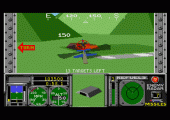
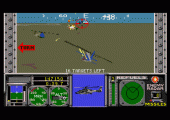
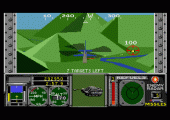
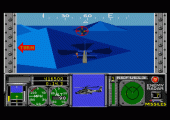
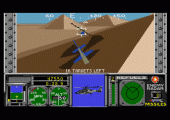
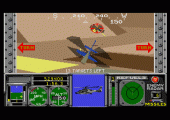
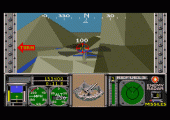
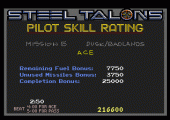
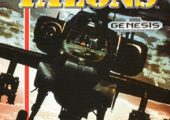
Recent Comments